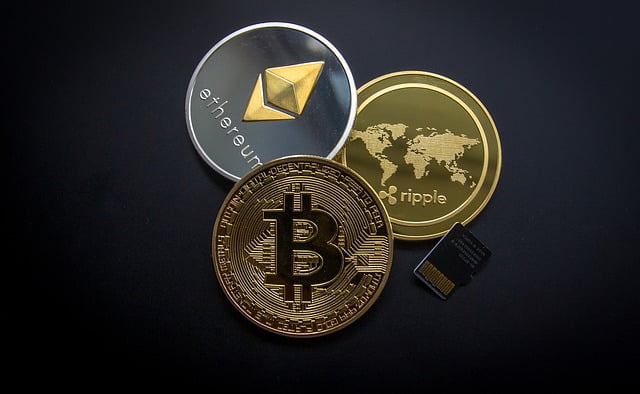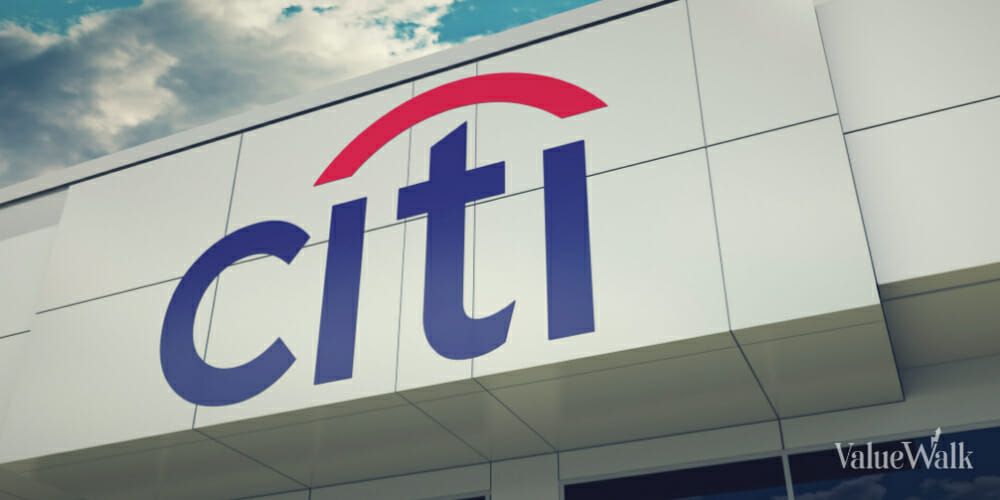Victor Argonov, senior analyst at international FinTech EXANTE says that The collapse of the Ripple XRP system is likely to increase investor interest in a similar decentralised project Stellar with the XLM token. This payment system duplicates the functions of Ripple, but is not tied to a private company, and therefore, it is perhaps better protected from prosecution.
Q1 2021 hedge fund letters, conferences and more
The Ripple XRP system token is one of the most unpredictable on the crypto market. For a long time, it cost $0.2-0.3 and almost never left these boundaries. In November, against the backdrop of a general rise in the market, it rose in price to $0.7, but in December it collapsed back, suspending participation in the rally. However, since February, it has resumed its growth, especially in April, where in 2 weeks XRP rose from $ 0.6 to $ 1.9 (3 times). But why is it growing so fast? Where are the limits of this growth and is there the possibility of a collapse?
History of Ripple
Many crypto market participants do not know that the Ripple payment system appeared before bitcoin and the very idea of cryptocurrencies - back in the mid-2000s. Only in 2011, its developers adopted the idea of a decentralised network - without mining, but with a radically higher transaction speed than Bitcoin. In 2013, the system was reoriented to banks, making them universal "rails" for fast payments in both cryptocurrencies and fiat. Banks became interested in the system, and by 2016 such organisations as Santander, Royal Bank of Canada, Bank of America, UniCredit, Merrill Lynch began to implement it.
However, the XRP system token itself has not enjoyed the trust of users for a long time. Unlike Bitcoin (BTC) or Ether (ETH), where multiple miners are in charge of the network, Ripple is run by an opaque company, Ripple Labs. The emission policy of the project was also unusual. Unlike BTC, where emission decreases over the years according to a well-known algorithm, Ripple Labs immediately created 100 billion XRP, but released only a smaller part to the market, and kept most of it in the company. This meant not only a colossal concentration of capital for one market player, but also the opportunity to collapse the rate at any time, throwing funds into the market. As a result, the token was worth less than a cent and was not popular.
In 2017, Ripple Labs took a step towards greater openness. 55 billion XRP were frozen in a special account, from which 1 billion XRP was brought to the market every month. At the same time, the total number of tokens was gradually decreasing: the commission for each transfer was negligible, but it was not charged to the issuer or intermediary, but was simply burned. All this allowed Ripple to improve its reputation, and in 2017 the token made a fantastic jump from $ 0.006 to $ 2.24, and at the beginning of 2018 it set a record of $ 3.8. This was followed by the deflation of the bubble, which for XRP lasted slower than the market as a whole. For a while, XRP ranked 3rd in terms of capitalisation after BTC and ETH, although it later lost ground. By early 2020, XRP had dropped to $ 0.2. Only in the fall of 2020, it began to rise in price along with the entire crypto market, but in December it fell sharply again in connection with a lawsuit from the American Securities and Exchange Commission (SEC).
The SEC lawsuit and the course of proceedings
In 2019, the American leadership actually launched a campaign against crypto projects created by private corporations. The first high-profile victim was Facebook's Libra stable currency project, which alarmed politicians as a potential competitor to the dollar and euro with a billion-dollar user base. The implementation of the project could turn Facebook into a virtual superpower. Libra was defeated in the US Congress, and the project was effectively cancelled. In the same year, more than a billion-dollar lawsuit was filed against the stablecoin Tether from Tether Inc, and the prosecution of the TON project from Telegram was launched. The SEC declared the currency of this project, Gram, a security, the distribution of which was carried out illegally, ignoring the relevant legislation. In the spring of 2020, TON actually repeated the fate of Libra.
In December 2020, charges similar to those against TON were brought against Ripple. According to the SEC, Ripple Inc illegally raised $ 1.3 billion through the sale of an XRP token. This token, according to the SEC, is also a security. The SEC asked the court to prohibit the circulation of the token and oblige the company to return the profit received, as well as to pay an additional fine.
The market reaction was pessimistic. Many crypto exchanges have removed XRP from trading. Remembering the fate of TON, a significant part of investors put an end to the future of Ripple. XRP dropped to mid-2020 levels and actually stopped participating in the cryptocurrency rally, falling further behind the leaders.
But in the spring of 2021, the situation changed. In some interim issues, the court sided with Ripple. He allowed the company to examine SEC official correspondence, demanded that the commission explain why it considers XRP, but not BTC or ETH, as a security, and also kept the right to secrecy of detailed financial information over the years for Ripple. Against this background, the XRP rate began to rise sharply. Exchanges that removed XRP from listing began to return the coin. Since the beginning of the year, the XRP rate has increased by almost an order of magnitude and was able to approach $2. Most of the growth came in April.
Now many investors are confident that Ripple will win the court or get off with just a fine. But the uncertainty remains high, and it makes sense to discuss in more detail a key issue that concerns the entire crypto industry.
Why is Ripple XRP considered a security while Bitcoin and Ether are not?
The issue of double standards in relation to the listed crypto projects is probably the key one in the proceedings. And it is not as simple as it might seem.
On the one hand, some of the differences between the projects are obvious. BTC and ETH are decentralised systems without a single management company, while Ripple is tied to one company. At the same time, BTC and ETH are usually called cryptocurrencies and are considered as electronic means of payment, while XRP is really somewhat reminiscent of the Ripple Labs share. After all, the Ripple system is far from all tied to the turnover of this token, and its acquisition by a market participant can be interpreted as an investment in Ripple Labs.
On the other hand, the legal significance of these differences is debatable. While the 2019-2020 trend against corporate (rather than decentralised) crypto projects was obvious, it was more of a political nature. Decentralised cryptocurrencies do not pose the same threat to the traditional financial system as corporate ones. They do not pretend to “transfer central bank power” to another off-the-shelf power centre like Facebook. They occupy a niche similar to gold, which also does not have a single producing centre. This is probably why the American authorities actually legalised BTC and ETH, making them available even to pension funds. However, there is also no formal ban on similar centralised projects in the United States.
If you look closely, then any of the listed tokens (BTC, ETH, XRP) can in some sense be recognised as a currency, and an exchange commodity, and even a stock.
- The actual attitude of the majority of market participants to all three coins is the attitude towards a speculative exchange-traded asset and a store of value. Crypto market participants invest in order to benefit from changing rates.
- At the same time, BTC and ETH are increasingly used as a means of payment. However, XRP cannot be called “just a Ripple token”. It was officially recognised as a virtual currency back in 2015 by the US government service FinCEN. In order to reclassify it into a security, the SEC must actually refute the already existing decision of that service.
- Finally, if you try, BTC, ETH, and XRP all have some similarities to stocks. By purchasing any of these coins, a market participant increases the capitalisation of the corresponding project. And although BTC and ETH are not tied to specific companies, the growth of their rates brings profit to the holders. Ultimately, the largest holders of decentralised cryptocurrencies benefit from capitalisation growth in the same way as the leaders of Ripple. This resemblance to stocks is far from complete, but perhaps it is enough to, with a strong desire, recognise all of them as securities.
What investors can expect
As we can see, the legal status of cryptocurrencies is still controversial. If desired, the court can find arguments in favour of recognising any of the listed coins as securities or other types of assets. Of particular uncertainty is the fact that the persecution of Libra and TON took place during the Donald Trump administration, while Joe Biden is expected by many to have a softer policy towards cryptocurrencies.
Collectively, Ripple is unlikely to follow the fate of TON. The system is actively supported by banks that have a lot of leverage. Perhaps Ripple Labs will only pay a fine. Even if the company is required to return $ 1.3 billion, then this figure seems to be lifting, given the current capitalisation of XRP (more than $60 billion) and connections with banks.
On the other hand, more pessimistic scenarios cannot be completely ruled out. For example, the XRP token may be banned from circulation in the United States, retaining circulation outside of them, but for obvious reasons, significantly losing in value. If the company is forced to completely stop trading tokens, then investors risk losing their investment.
Thus, XRP today is one of the most risky assets of the crypto market. If successful, it can rise in price at times, far exceeding the old record of $3.7. But with some probability it may depreciate. The collapse of the Ripple system, in turn, is likely to increase investor interest in a similar decentralised project Stellar with the XLM token. This payment system duplicates the functions of Ripple, but is not tied to a private company, and therefore, it is perhaps better protected from prosecution.













